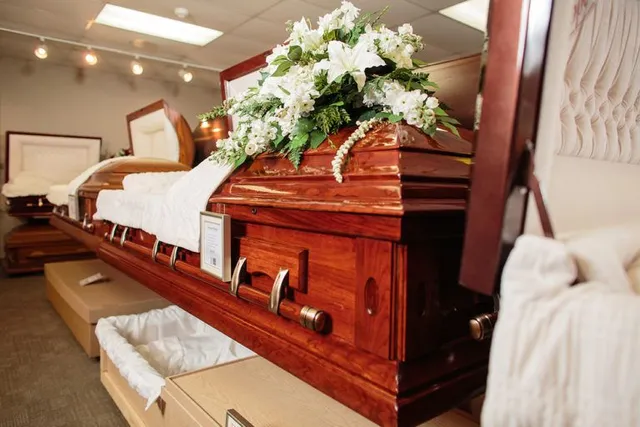While some may see cremation as a break from tradition, it can be a way to honor deeply held values in new and meaningful ways. Over time, death and funeral customs have changed to reflect cultural beliefs and societal attitudes. In the modern world, cremation is becoming a widely accepted alternative to traditional burial.
A History of Traditions: Exploring the Evolution of Funeral Practices
For millennia, burial has been the predominant funeral practice across various cultures. This tradition stemmed from religious beliefs about the afterlife, often involving the preservation of the body for a spiritual journey. Additionally, burial served as a practical way to manage the deceased and prevent the spread of disease. However, societal attitudes towards death and funerals are shifting. The rise of cremation reflects a growing desire for flexibility, affordability, and environmentally friendly options. Green burials, which prioritize minimal environmental impact, further highlight this evolving approach to final arrangements.
Cremation: A Modern Choice Rooted in Respect
Cremation involves the respectful disposition of the deceased through the reduction of the body to cremated remains, commonly referred to as ashes. This process takes place in a specialized furnace under controlled temperatures. Cremation offers several advantages over traditional burial. Environmentally, cremation requires significantly less land and resources compared to traditional burial plots and caskets. Alterna Cremation which also offers Ste. Rose cremation, for instance, emphasizes their commitment to environmentally responsible practices. Furthermore, cremation is often a more affordable option, allowing families to personalize memorials and celebrate life within their budget. Importantly, the acceptance of cremation is growing within various religious denominations. Many religious leaders recognize the respectful nature of cremation while acknowledging the importance of honoring individual beliefs and traditions.
Honoring Traditions in New Ways: Creative Approaches After Cremation
Cremation allows families to personalize memorial services and celebrations of life in ways that resonate with them. Urns come in a wide variety of styles and materials, allowing families to select a meaningful vessel for their loved one’s cremated remains. Scattering ashes in a cherished location or incorporating them into memorial jewelry are growing trends that offer a sense of connection and remembrance. The digital age has also opened doors for virtual memorial services and online tributes, facilitated by the ease of sharing memories and condolences electronically. These modern approaches can still honor cultural and religious traditions in a way that feels personal and meaningful for families navigating grief.
Embracing Open Communication: Talking About Cremation with Your Loved Ones
Open communication with loved ones about funeral preferences, including cremation, is crucial. Initiating these conversations can be difficult, but they are essential for ensuring your wishes are respected and easing the burden on grieving family members. Approach these conversations with sensitivity and respect, acknowledging the emotional nature of the topic. Consider sharing your thoughts on funeral arrangements and cremation, and be open to hearing your loved ones’ perspectives. Having a clear understanding of each other’s wishes can provide comfort and peace of mind during a difficult time. Additionally, it’s important to have legal documentation in place, such as a will or pre-planning document, outlining your cremation preferences. This ensures your wishes are legally binding and prevents any confusion for your family during the planning process.
What Cremation Can (and Can’t) Do: Addressing Common Misconceptions
Several myths and misconceptions surround cremation. One common misconception is that cremation signifies a lack of respect for the deceased. In reality, cremation is a respectful way to dispose of remains, allowing families to hold traditional ceremonies like viewings or memorial services before cremation takes place. Another concern is that cremation prevents families from holding traditional burial rituals. This isn’t the case. Cremated remains can be buried in a cemetery plot or columbarium, allowing families to have a designated place for remembrance. Religious perspectives on cremation also vary.
Religious perspectives on cremation have evolved over time. Many denominations, including some Christian and Jewish congregations, now view cremation as an acceptable practice. It’s always advisable to consult with a religious leader to understand their specific beliefs and practices regarding cremation. The key takeaway is that cremation allows for respectful disposition while offering families the flexibility to personalize memorials and find comfort in their chosen approach.
Conclusion
The concept of death and funeral traditions can be a sensitive topic. However, open communication and education can empower families to make informed decisions about cremation. Cremation is not a break from tradition; it’s an evolving approach that allows families to honor long-held values in new and meaningful ways. The environmental benefits, affordability, and flexibility associated with cremation make it a compelling choice for many families. By embracing open communication and planning ahead, cremation can become a respectful and personalized way to celebrate a life well-lived. Remember, honoring traditions doesn’t have to be confined to the past. Cremation offers a modern approach that allows families to create a meaningful and lasting tribute to their loved ones.






